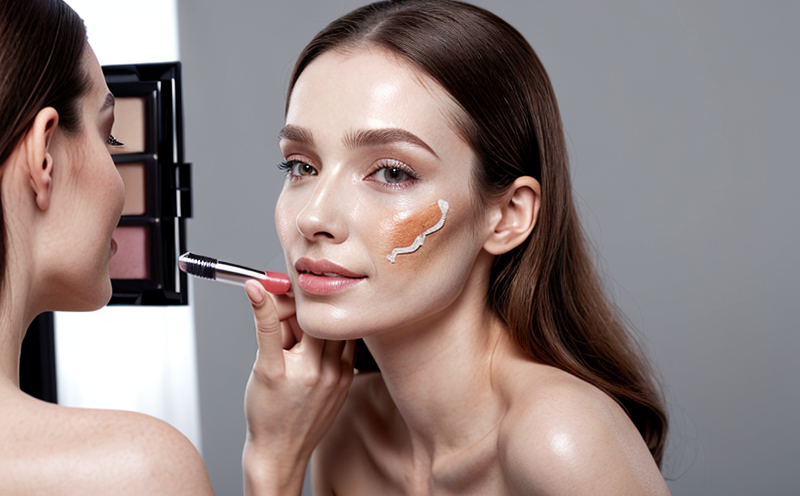Dermatological Safety Testing of Hair Dyes
The dermatological safety testing of hair dyes is an essential component in ensuring that cosmetic products are safe for use by consumers. This testing process involves evaluating the potential risks associated with the application and use of hair dyes, including allergic reactions, irritation, and other adverse effects on the skin.
According to international standards such as ISO 10218-3:2019, the testing protocol must cover a range of scenarios that simulate real-world conditions. This includes evaluating the product under various environmental factors such as humidity, temperature, and light exposure. The test subjects are typically human volunteers who undergo rigorous monitoring for any signs of adverse reactions.
The primary objective of this testing is to ensure compliance with regulatory requirements set forth by authorities like the European Commission's Regulation (EC) No 1223/2009 on Cosmetics and the FDA’s final rule on Color Additives. By adhering strictly to these guidelines, manufacturers can mitigate potential legal risks and maintain consumer trust.
The testing process begins with detailed formulation analysis aimed at identifying all ingredients present in the hair dye formula. This step is crucial because certain chemicals may be more likely to cause adverse effects than others. Once identified, each ingredient undergoes individual evaluation for its safety profile.
After initial screening, selected components are subjected to various tests designed specifically to assess their potential impact on human health. These tests can include patch testing, in vitro assays (such as skin irritation tests), and more advanced techniques like gene expression profiling.
Patch testing involves applying small amounts of the hair dye directly onto patches placed on the inside forearm of volunteers for up to 48 hours or longer depending on the standard used. Volunteers are closely monitored during this period for any signs of redness, swelling, itching, or other symptoms indicative of allergic contact dermatitis.
In vitro assays provide additional insights by exposing cultured human cell lines to the hair dye ingredients in controlled laboratory settings. These experiments help researchers understand how individual compounds interact with biological systems at a molecular level without needing live subjects.
Advanced techniques like gene expression profiling offer even deeper insight into potential risks by examining changes in gene activity patterns following exposure to various components of the hair dye formulation.
The comprehensive nature of this testing ensures that all relevant aspects of dermatological safety are thoroughly examined. It not only protects consumers from unnecessary harm but also helps manufacturers develop safer and more effective products.
Why Choose This Test
- Ensures compliance with global regulatory standards for cosmetics.
- Provides valuable data on potential allergens and irritants in hair dyes.
- Aids in the development of safer, more effective products.
- Maintains consumer trust by reducing risks associated with product use.
- Facilitates market access to regions that have stringent safety requirements.
Customer Impact and Satisfaction
By ensuring the highest level of safety in hair dye products, this testing process significantly enhances customer satisfaction. Consumers can trust that they are using products that do not pose significant health risks. This trust translates into repeat purchases and positive word-of-mouth recommendations.
Moreover, satisfied customers contribute positively to brand reputation and loyalty. For quality managers and compliance officers within manufacturing companies, this means fewer recalls and lower costs associated with non-compliance fines or product modifications.
Use Cases and Application Examples
This testing is particularly relevant for cosmetic companies that formulate and market hair dye products. It plays a critical role in the R&D process by providing actionable insights into ingredient selection and formulation adjustments.
A specific example would be a company developing a new semi-permanent hair colorant. By subjecting this product to dermatological safety testing, they can identify any potential issues early on and make necessary improvements before launching it onto the market.





